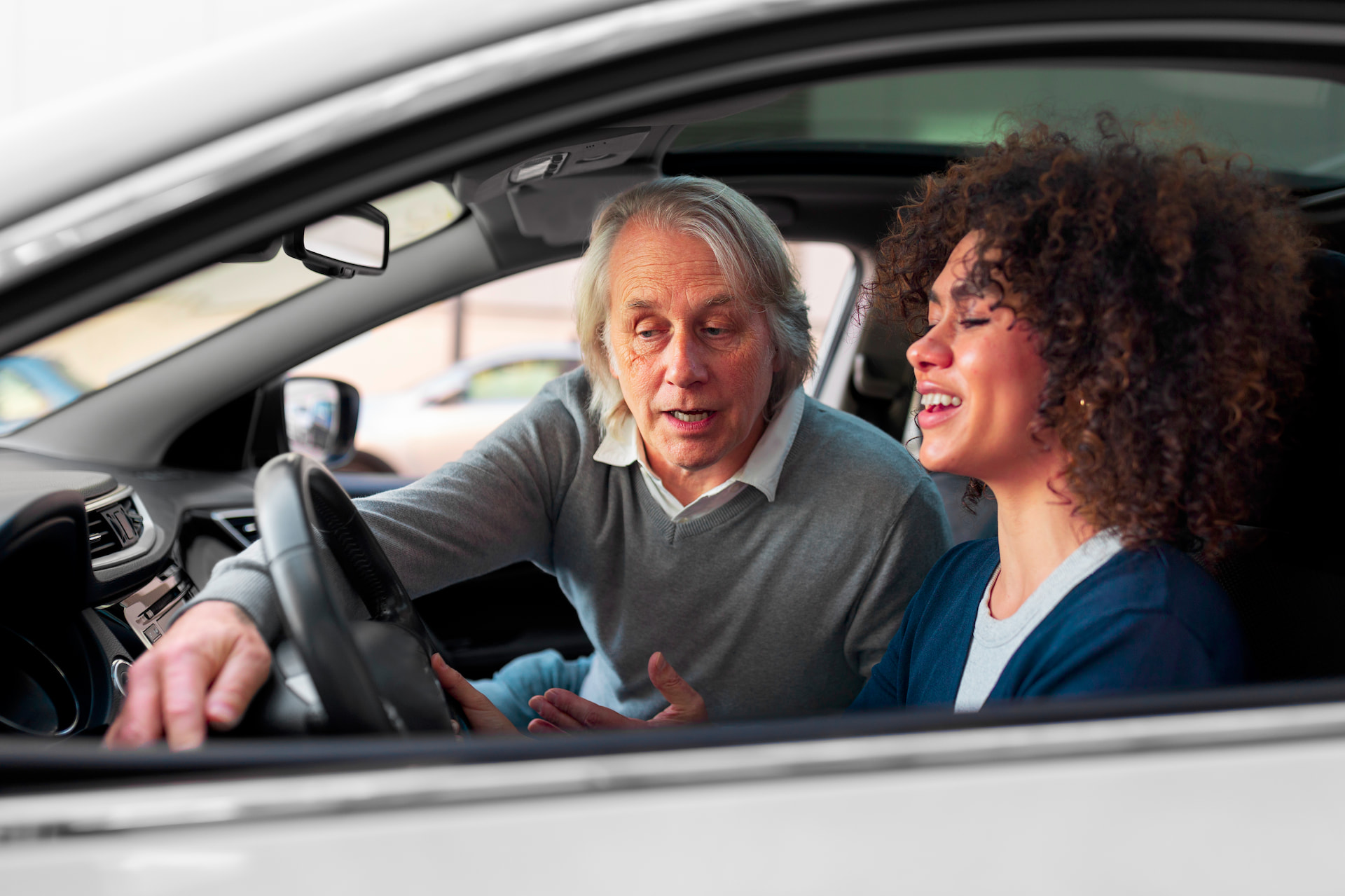
Learning to drive presents challenges for both learners and instructors. Beyond mastering driving skills and passing the test, safety is paramount. Inexperience and nerves can lead learners to make potentially dangerous mistakes.
Dual control cars are invaluable for instructor safety and learner protection. These vehicles feature additional pedals on the passenger side, allowing the instructor to intervene and maintain control. This guide explores dual control cars, including their types, purpose, and proper usage.
What are Dual Control Cars?

Driving instructors favor dual control cars equipped with passenger-side pedals for braking and, in manual transmissions, clutching.
- Static Dual Controls: These pedals remain stationary, preventing instructor foot entrapment but hindering observation of learner pedal usage, particularly at night.
- Passive Dual Controls: These pedals move in sync with the learner’s, enabling precise instructor observation but increasing the risk of foot entrapment.
Why Do Instructors Need Dual Control Cars?

Instructor responsibility extends to learner safety. While guidance and instruction are crucial, unexpected situations may arise, requiring immediate intervention. Dual controls provide a safety net, allowing instructors to prevent accidents.
Are Dual Control Cars Mandatory?
While not explicitly mandated by the government, dual control cars are essential for most instructors. They are crucial for managing unexpected situations and are mandatory for motorway driving with learners.
Using Dual Controls Effectively
- Proper Usage: Dual controls are primarily for emergencies, not routine interventions. Encourage learner problem-solving whenever possible. After any intervention, discuss the situation with the learner to reinforce learning.
- Improper Usage: Avoid excessive intervention. Over-reliance on dual controls hinders learner development and can create unsafe driving habits.
Where to Get Dual Controls
Purchasing a New Car
- Factory-Installed Dual Controls: Some car models are available with factory-installed dual controls. This option provides seamless integration and ensures optimal performance.
- Dealer-Installed Dual Controls: Many car dealerships offer dual control installation services. This can be a convenient option, especially if you’re purchasing a new car from them.
Leasing a Dual Control Car
- Specialized Leasing Companies: Several companies specialize in leasing dual control cars. This can be a cost-effective solution for instructors who prefer to lease their vehicles.
- General Car Leasing Companies: Some general car leasing companies offer dual control cars as part of their fleet. This can be a good option if you need a car for both personal and professional use.
Retrofitting Your Existing Car
- Professional Installation: Hiring a professional installer to retrofit your car with dual controls ensures proper installation and optimal functionality.
- DIY Installation: For those with mechanical expertise, DIY installation is possible. However, it’s important to follow the manufacturer’s instructions carefully to avoid damage to your vehicle.
Popular Dual Control Systems
- He-Man Dual Controls: These model-specific controls offer precise fit and performance but may not be transferable to different car models.
- Universal Dual Controls: Designed to fit a wide range of vehicles, universal controls offer flexibility and cost-effectiveness, especially for instructors who frequently change cars.
Additional Considerations
- Legal Compliance: Adhere to all relevant road traffic laws and regulations when using dual control cars.
- Insurance: Ensure your insurance policy covers dual control cars.
- Maintenance: Regular maintenance is essential to keep your dual control system in optimal working condition.


